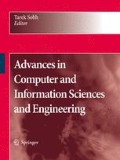Abstract
HTML based standards and the new XML based standards for digital transcripts generated by court recorders offer more search and analysis options than the traditional CAT (Computer Aided Transcription) technology. The LegalXml standards are promising opportunities for new methods of search for legal documents. However, the search techniques employed are still largely restricted to keyword search and various probabilistic association techniques. Rather than keyword and association searches, we are interested in semantic and inference-based search. In this paper, a process for transforming the semi-structured representation of the digital transcript to an epistemic structured representation that supports semantic and inference-based search is explored.
Access this chapter
Tax calculation will be finalised at checkout
Purchases are for personal use only
Preview
Unable to display preview. Download preview PDF.
References
Li, Ping, and Kenneth W. Church, “A Sketch Algorithm for Estimating Two-Way and Multi-Way Associations”, Association for Computational Linguistics, Vol. 33. No 3, 2007.
Minker, Jack, “Control Structure of a Pattern-Directed Search System”, SIGART Newsletter, No. 63, 1977.
Lewis, C.I., “A Survey of Symbolic Logic,” Berkeley: University of California Press , 1918. \bibitem Kripke, S., “Semantical Considerations on Modal Logic,” Acta Philosophica Fennica, pp. 16, 83-94, 1963.
Kripke, S., ``Semantical Considerations on Modal Logic,'' Acta Philosophica Fennica, pp. 16, 83-94, 1963.
Hintikka, J., “Individuals, Possible Worlds and Epistemic Logic,” Nous, pp. 1, 33-62, 1967.
Hintikka, J., “Knowledge and Belief: An Introduction to the Logic of the Two Notions,” Cornell: Cornell University Press, 1962.
Doignon, J.P., and J.C. Falmagne, “Knowledge Spaces,” Hiedelberg; Springer ISBN-3-540-64501-2, 1999.
Nirenburg, S., and V. Raskin, “Ontological Semantics,” MIT Press, 2004.
Sowa, J.F., “Semantics of Conceptual Graphs,” Proceeding of the 17th Annual Meeting of the Association for Computation Linguistics, pp. 39-44, 1979.
Brasil, S.M., and B.B. Garcia, “Modeling Legal Reasoning in a Mathematical Environment through Model Theoretic Semantics,” ICAIL ‘03. Edinburgh, Scotland, UK, 2003.
Minsky, M., “A framework for representing knowledge,” The psychology of computer vision. New York: McGraw-Hill, pp. 211-277, 1975.
Covington, M., “Natural Language Processing For Prolog Programmers,” Prentice Hall, 1994.
Cussens, J., and S. Pulman, “Incorporating Linguistics Constraints into Inductive Logic Programming,” Proceedings of CoNLL-2000 and LLL-2000, pp. 184-193. Lisbon, Portugal, 2000.
Bergadano, F., and D. Gunetti, “Inductive Logic Programming From Machine Learning to Software Engineering,” MIT Press, 1996.
Lehnert, W.G., “The Process of Question Answering,” Lawrence Erlbaum Associates, Inc., Publishers, 1978.
Gettier, E., “Is Justified True Belief Knowledge?,” Analysis, Vol.23, pp. 121-23. 1963.
Dancy, J., “Contemporary Epistemology,” Basil Blackwell Inc., 1986.
Chen, G., J. Choi, and C. Jo, “The New Approach to BDI Agent-Based Modeling,” ACM Symposium on Applied Computing ‘04. Nicosia, Cyprus, 2004. \bibitem Blackburn, P., and J. Bos, “Representation and Inference for Natural Language,” CSLI Publications, 2005.
Blackburn, P., and J. Bos, ``Representation and Inference for Natural Language,'' CSLI Publications, 2005.
Fagin, R., J. Halbern and M. Vard, “Model Theoretic Analysis of Knowledge,” Journal of Association for Computing Machinery,Vol 38. No. 2, 1991.
Editor information
Editors and Affiliations
Rights and permissions
Copyright information
© 2008 Springer Science+Business Media B.V.
About this paper
Cite this paper
Hughes, T., Hughes, C., Lazar, A. (2008). Epistemic Structured Representation for Legal Transcript Analysis. In: Sobh, T. (eds) Advances in Computer and Information Sciences and Engineering. Springer, Dordrecht. https://doi.org/10.1007/978-1-4020-8741-7_19
Download citation
DOI: https://doi.org/10.1007/978-1-4020-8741-7_19
Publisher Name: Springer, Dordrecht
Print ISBN: 978-1-4020-8740-0
Online ISBN: 978-1-4020-8741-7
eBook Packages: Computer ScienceComputer Science (R0)

